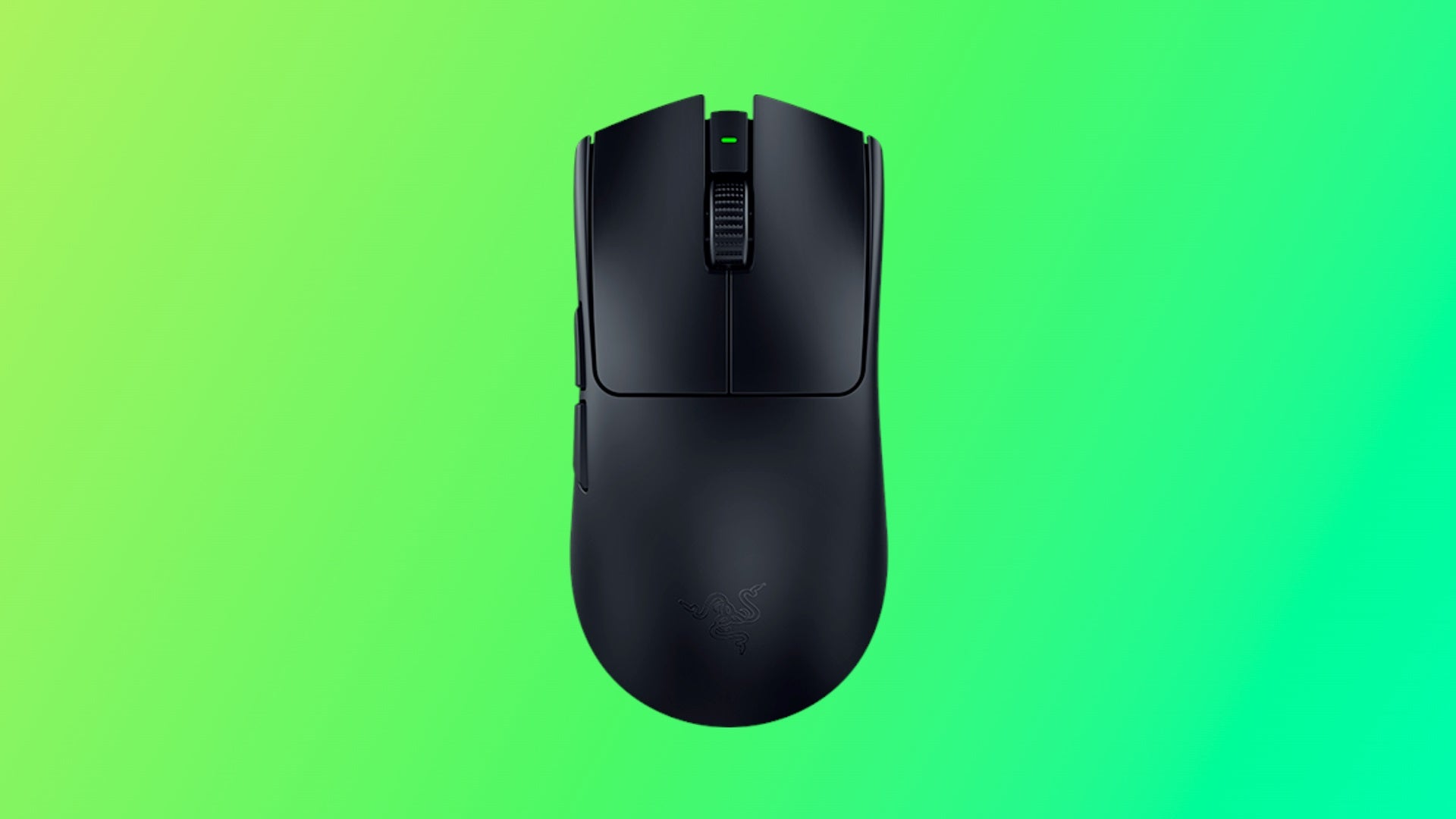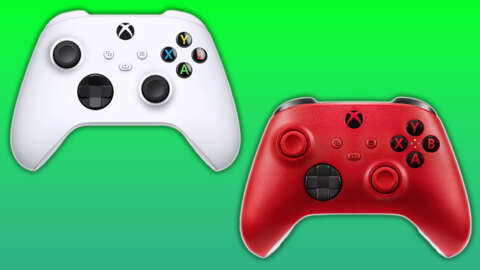Razer’s reputation has generally been tied to flashy gaming gear laden in RGB lighting and loud branding – top of the line stuff for the most part, but with a bit of markup to match the luxury aesthetic. As its product lines have matured, the more it has been able to carve out a diverse roster to cover multiple niches with focused execution, many of which have ended up on recommendation lists for best gaming mice or best gaming keyboards. And that’s what the new Viper V3 Pro gaming mouse represents.
Like the Glorious Model D2/O2 and Asus ROG Keris II Ace we most recently reviewed, the Viper V3 Pro is another no-nonsense mouse that trims out any inessential features to solely deliver something laser targeted towards competitive gaming. You’d barely be able to tell it’s a Razer mouse by looking at it – hell, there’s no RGB lighting, believe it or not. However, with it being super lightweight and built with a premium feel, the Viper V3 Pro lets its performance do the talking.
Razer Viper V3 Pro - Design and Technical Details
The Viper V3 Pro comes in at 54 grams (same as the Keris II Ace), which is about as light as it gets from what we’ve seen at top peripheral manufacturers. It's also a bulkier mouse measuring at 127mm (L) x 64mm (W) x 40mm (H), and the contrast between featherweight class and a larger body makes it uniquely suited for all grip types. It's built with a symmetrical, ambidextrous shape, and while it's quite nondescript and lacks a bit personality in its aesthetic (rare to say for a Razer product), it has the right physical characteristics when using it. Especially with the length and hunch at its highest point, a palm grip is pretty comfortable even though I prefer a claw-style grip, making the mouse feel like a natural extension of my hand.
Although there are no rubber-like grips on the Viper V3 Pro to keep weight down, the “smooth-touch texture” used for the mouse body creates a secure stickiness with my hand when holding it. It's a type of material that can get grimy over time, but that's the trade-off for better grip. Tactile, rubbery grip tapes are included in the package and adhere to the left and right side and both mouse buttons — they work well but I prefer the natural texture of the material that makes up the mouse.
Left and right mouse buttons feature Razer’s Gen-3 optical switches, and they offer a confident, firm click I rarely sense even in performance-level mice. There’s no squishiness, which makes them satisfying to click, but more importantly, rapid clicks feel much easier to pull off. This extends to the scroll wheel that balances stiffness to create natural feeling clicks as a button and properly tactile when scrolling up and down at each increment. Two standard thumb buttons are on the left side of the mouse with enough surface area and separation to use confidently in-game. The Viper V3 Pro uses Razer’s Gen-2 Focus Pro optical sensor capable of up to 35,000 DPI, which is very accurate and provides consistent tracking and adjustable lift-off distance regardless of the surface it’s used on.
Taking a look at the underside, you’ll see its teflon mouse feet cover much more surface area than a typical mouse, and this created a noticeably smoother glide across my desk mat compared to any other mouse I’ve used in recent memory. It may seem like a minor detail, but the difference that comes with reduced friction in fast swipes and miniscule movements alike is stark. This is where you’ll find the DPI/power button, and while this is intended to mitigate potential misclicks and accidentally screwing with DPI, the utility of having those buttons topside is one of the compromises I’m a bit bummed about that keep the Viper V3 Pro focused on pure performance.
Another compromise worth mentioning is the lack of a 2.4GHz wireless USB dongle and Bluetooth capability. This is a wireless mouse, but the Viper V3 Pro only works wirelessly with the packaged HyperPolling receiver, meaning you have to use the included USB-C cord to connect the receiver to your computer in order to use the mouse. It’s a minor inconvenience when it comes to keeping cables to a minimum, but this also limits its versatility in terms of using it in other non-gaming scenarios, especially in the absence of Bluetooth. The assumption is that those seeking a mouse based purely on performance won’t care for features like this and trimming out anything unnecessary is the design philosophy here.
The thought process behind this is that the Viper V3 Pro, again, is solely meant for competitive gaming – if you’re getting this mouse, you’re going to want to get the best out of it, hence the HyperPolling receiver being the only way to connect wirelessly. And when you’re playing multiplayer shooters, those high polling rates of 4000 Hz and upward can make a difference with how detailed and granular it tracks your mouse movements. Granted, you’ll need a high refresh rate monitor and a PC strong enough to maintain those high frame rates to actually notice the improvement from bumping up your polling rate. Still, when all these features are working in concert, it’s hard to go back to standard fare equipment.
Razer Viper V3 Pro - Software and Features
Like all Razer peripherals, the Viper V3 Pro must be configured through the Razer Synapse software, which can be a bit much if this is your only Razer product, but it stays slim as an app at just 189MB. It seems every company has a software suite to cover all its bases, but thankfully once the mouse is recognized, customizing its settings is a breeze.
Here, you’ll be able to do some fine-tuning to get the most out of the Viper V3 Pro. You can set up to five DPI profiles, set your polling rate, and calibrate landing and liftoff distance of your sensor. There’s also an option to auto-switch your polling rate when you’re in a game; since higher settings drain the battery faster, it’s smart to keep it at a normal 1000Hz on desktop, then have it only kick up to 4000 Hz or 8000 Hz when booting up a game, for example.
Again, there isn't any RGB lighting to be found on the Viper V3 Pro (shocking, I know), so there’s no need to worry about Chroma profiles and special effects.

Razer Viper V3 Pro - Performance
With every piece of PC gaming hardware, I like to put them through their paces in different games to see how they hold up in those particular scenarios. Counter-Strike 2 is my go-to competitive shooter and Final Fantasy XIV has been my daily MMORPG for years, and the Viper V3 Pro was an absolute beast in both.
Considering that a proper mouse is one of the major keys to success in CS2 due to it being all about precision aiming and accurate snap-movements, the Viper V3 Pro shined bright – it’s been a while since I’ve felt a substantial upgrade from a single piece of gaming hardware. Playing with 4000 Hz polling rate on 1800 DPI is a noticeable yet relatively minor advantage as a fairly mid-tier competitive player (and 8000 Hz is just overkill), but it’s the confluence of that and features like the shape, size, grip, weight, and the near frictionless glide from the wider mouse feet that had me fully locked in on ranked matches in CS2. Lining up headshots, quick-swiping for highlight reel-style AWP pick-offs, and controlling my spray pattern on rapid-fire weapons are all skills I gradually improve on, but it certainly helps when my mouse is in near-perfect sync with what I need from it. I find it hard to imagine what else I’d want from a mouse for shooters.
In the case of FFXIV, I’m not necessarily looking for anything special out of a mouse other than it being reliable when it comes to running high-level raids, trials, and sorting through windows upon windows of different inventory systems. The scroll wheel is probably what stood out to me since I have specific actions mapped to it – its tactility when scrolling up and down and as a button was as reliable as I could ask. And the side thumb buttons held up their end of the bargain, which also have important keybindings for me.
Using the Viper V3 Pro in FFXIV and for a few days under regular circumstances rather highlighted how well-made it is and how it’s a joy to use considering its size-to-weight ratio and just how sturdy it still feels in the hand. It seems designed to be flexible regardless of your preferred grip type, filling my palm in a palm-style grip and light enough to be a comfortable fingertip mouse.
Battery life is another impressive aspect – after using it for about four days straight in a normal everyday setting and about 10 hours of gaming at 4000 Hz polling rate, it was still just above 50% charge. For reference, Razer states it’ll last up to 95 hours at the normal 1000 Hz and 40 hours at 4000 Hz, which would roughly line up in my experience. And that’s plenty of juice for a wireless gaming mouse.










